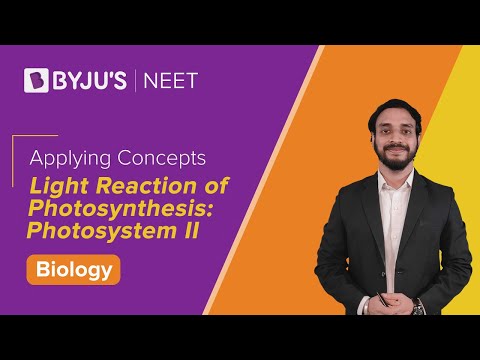Light Reaction Definition
“Light reaction is the process of photosynthesis that converts energy from the sun into chemical energy in the form of NADPH and ATP.”
What is Light Reaction?
The light reaction is also known as photolysis reaction and takes place in the presence of light. It usually takes place in the grana of chloroplasts.
The photosystems have pigment molecules. In the plants, chlorophyll is one of the primary pigments which actively takes part in the process of light reactions like photosynthesis. The accessory pigments include carotenoids. The energy from the sun is absorbed by the chlorophyll in the thylakoid membrane of the chloroplasts. The energy is then transferred to ATP and NADPH that is generated by two-electron transport chains. Water is used and oxygen is released during the process.
Let us have an overview of light reaction and the mechanism involved in light reaction.
Also Read: Cyclic and non-cyclic photophosphorylation
Process of Light Reaction
Light reaction is the first stage of photosynthesis process in which solar energy is converted into chemical energy in the form of ATP and NADPH. The protein complexes and the pigment molecules help in the production of NADPH and ATP.
The process of light reaction is given below-
- In light reactions, energy from the sunlight is absorbed by the pigment chlorophyll and is converted into chemical energy in the form of electron charge carrier molecules such as NADPH and ATP.
- Light energy is utilized in both the Photosystems I and II, present inside thylakoid membranes of the chloroplasts.
- The carbohydrate molecules are obtained from the carbon dioxide from the use of chemical energy gathered during the reactions.
- The Light energy tends to split into the water and later extracts the electrons from the photosystem II; then the electrons move from the PSII to b6f (cytochrome) to the photosystem I (PSI) and reduce in the form of energy.
- The electrons are re-energized in the Photosystems I and the electrons of high energy reduce NADP+ into NADPH.
- In the process of non-cyclic photophosphorylation, the cytochrome uses the electron energy from Photosystem II to pump the ions of hydrogen from the lumen to stroma; later, this energy allows the ATP synthase to bind to the third phosphate group to the ADP molecule, which then forms the ATP.
- In the process of cyclic photophosphorylation, the cytochrome b6f uses electron energy from both the Photosystems I and II to create a number of ATP and stops the production of the NADPH, thus maintaining the right quantities of ATP and NADPH.
Thus, the light reactions harness the light energy to drive the transport of electrons and the pumping of the proton, to convert the energy from the light into the biologically useful form ATP and produces a usable source of reducing the power NADPH.
Also Read: Difference between Light and Dark Reaction
Key Points on Light Reaction
- The light reaction traps the energy from the sun and converts it into chemical energy that is stored in NADPH and ATP.
- Oxygen is released as the waste product.
Also Read: Electron Transport Chain
To know more about light reaction and the process involved in light reaction, keep visiting BYJU’S website or download BYJU’S app for further reference.
Recommended Video:


Many Many thanks to you